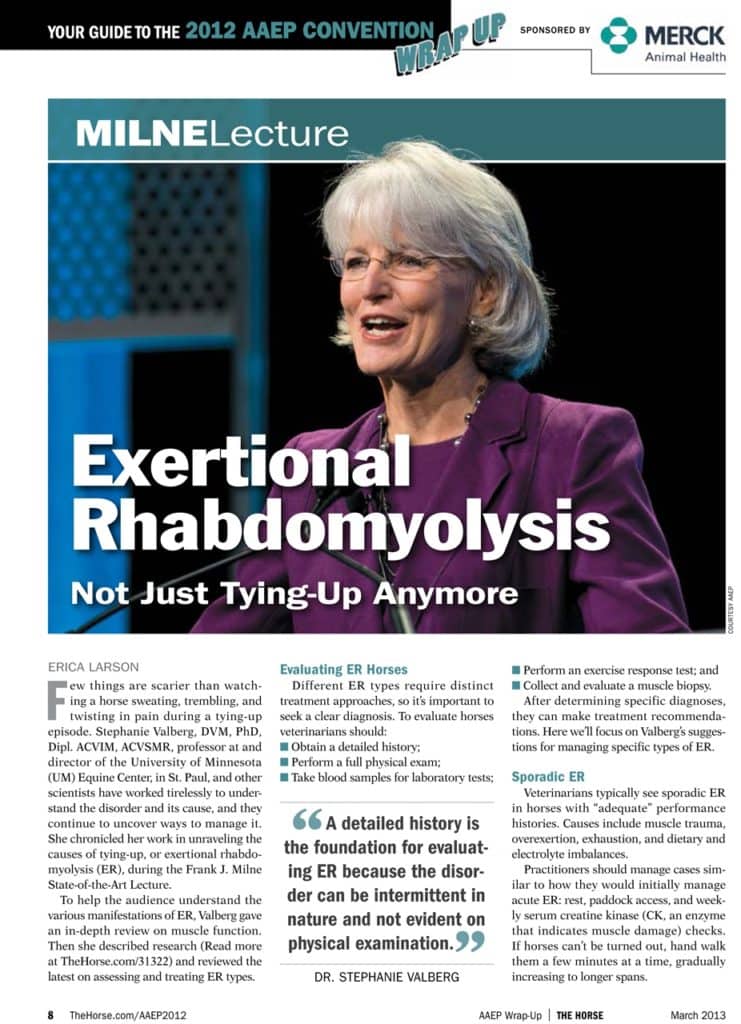
The Equine Heart: Power Plant Unequaled
Learn about the equine heart and some conditions most often encountered by equine cardiologists.

Learn about the equine heart and some conditions most often encountered by equine cardiologists.

California racing saw a sharp increase last year in the number of fatalities due to cardiac failures.

One veterinarian described the steps involved in conducting an ultrasound examination of the equine lungs.

One vet encouraged practitioners and farriers to take a biomechanical approach to treating some foot problems.

The University of Kentucky Gluck Equine Research Foundation published its 2012 Research Report in March.

The University of Minnesota’s Dr. Stephanie Valberg discussed exertional rhabdomyolysis (formerly tying up) the 2012 Frank J. Milne State-of-the-Art lecture during the 2012 AAEP convention.

Equine respiratory system dysfunction is an important cause of exercise intolerance and poor performance in horses.

Our experts answer your questions about ulcers, GI tract problems, and general “tummy troubles” in horses.

Research shows that various angles of the outer and inner hoof are linked to different kinds of lameness.
My two horses’ urine output is very different in smell and color. What could be causing this?

In this UK Seminar Series presentation, David Horohov, PhD, discusses the effects of exercise on the equine immune system.

Dr. Stephen Reed recaps studies on endocrinology, neurologic and muscle disorders, foal health, and more.

A research team is examining how infectious disease and inflammation impact cells in the horse’s gut.

Veterinarians are starting to understand the complexity and diversity of equine microbiome.

Horse owners and veterinarians can identify a club foot based on classic signs and grades of severity.

A specific trimming technique increased the hoof’s weight-bearing area and increased the heel angle.
Stay on top of the most recent Horse Health news with
"*" indicates required fields